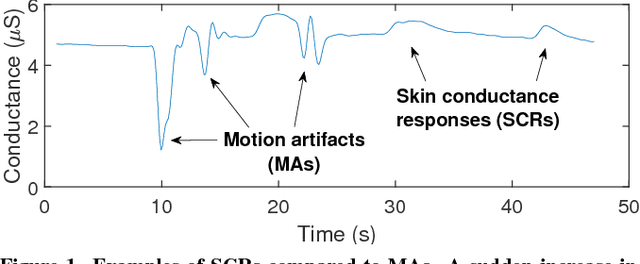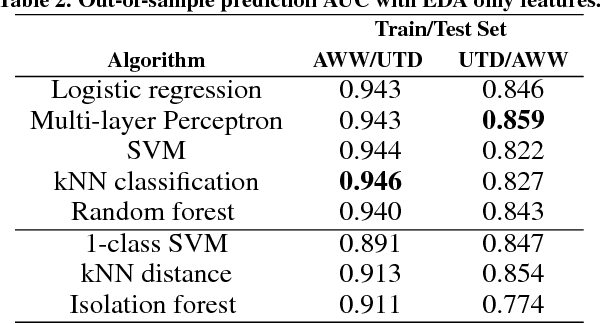Unsupervised Motion Artifact Detection in Wrist-Measured Electrodermal Activity Data
Paper and Code
Jul 26, 2017



One of the main benefits of a wrist-worn computer is its ability to collect a variety of physiological data in a minimally intrusive manner. Among these data, electrodermal activity (EDA) is readily collected and provides a window into a person's emotional and sympathetic responses. EDA data collected using a wearable wristband are easily influenced by motion artifacts (MAs) that may significantly distort the data and degrade the quality of analyses performed on the data if not identified and removed. Prior work has demonstrated that MAs can be successfully detected using supervised machine learning algorithms on a small data set collected in a lab setting. In this paper, we demonstrate that unsupervised learning algorithms perform competitively with supervised algorithms for detecting MAs on EDA data collected in both a lab-based setting and a real-world setting comprising about 23 hours of data. We also find, somewhat surprisingly, that incorporating accelerometer data as well as EDA improves detection accuracy only slightly for supervised algorithms and significantly degrades the accuracy of unsupervised algorithms.
 Add to Chrome
Add to Chrome Add to Firefox
Add to Firefox Add to Edge
Add to Edge